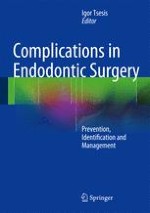2014 | Boek
Over dit boek
This book presents up-to-date recommendations for the prevention, diagnosis, and management of complications in endodontic surgical procedures, based on the best available scientific evidence. Common risks such as wound healing impairment, infection and bleeding are discussed and specific complications related to endodontic surgery, such as maxillary sinus involvement and damage to adjacent neurovascular structures, are reviewed. For each step of endodontic surgical procedures, surgical goals and possible outcomes are reviewed. Preoperative, intraoperative and postoperative risk factors for complications are identified and treatment options presented. Helpful decision-making algorithms, tables and flow charts complement the reader-friendly text.
